86 F high temperature in the Twin Cities Monday.
78 F average high on August 31.
85 F high on August 31, 2014.
August 31, 1949: Earliest snowfall know for Minnesota. A trace of snow fell at the new Duluth Airport
August 31, 1947: Tornado hits Le Center, killing one person
September 1: "Emma M. Nutt Day". Emma was the first female telephone operator. No kidding.
September SaunaMany
years ago, on a Northwest flight, I had the good fortune of sitting
next to an investment banker. "What's the best investment for the long
haul?" I asked. He thought about it and surprised me with his answer.
"Get a graduate degree. Go back to school. The additional salary you
make will outpace any returns from stocks or bonds."
The idea that
you graduate with a degree and you have all the training you'll ever
need has gone the way of fax machines, quadraphonic sound, 3-D TV and
New Coke. There are great options at local schools and a wealth of
online courses.
Every business is being disrupted - we're all going to need to get smarter, with more skills under our belt.
Until the robots take over.
Welcome
to the Dog Days of September; a streak of days with highs well into the
80s, coupled with a dew point near 70. A free sauna, in the privacy of
your back yard! Models keep us uncomfortably warm and steamy into the
holiday weekend with a growing chance of T-storms
Friday into
Sunday. No all-day washouts, but it may look more like June with a couple hours of hard rain and thunder each day.
We cool off a little by mid-month but no controversial cold fronts are brewing.
Temperature Tells Only Half the Story.
The chart above from Iowa State shows the predicted heat index this
week from multiple models; the combination of mid to upper 80s and a dew
point near 70F may create a heat index in excess of 95F today, Thursday
and Saturday.
Flashes of Mid-July.
A bloated heat-pump high pressure ridge is forecast to temporarily
stall over the central USA; keeping us unusually warm and sticky into
the weekend. NOAA's GFS model (above) pulls cooler, drier air into
Minnesota in time for Labor Day; the ECMWF (European) hints that the
push of cooler air may stall to our north and west, keeping us on the
uncomfortable side of the front into early next week.
Entering Another Wet Phase.
The 7-Day rainfall potential map from NOAA prints out over 1.5" of rain
for roughly the northwest half of Minnesota, with some 3-4" amounts
near International Falls by next Monday evening. Meanwhile the soggy
remains of "Erika" continue to douse Florida and coastal Georgia with
swarms of T-storms capable of additional flash flooding.
Model Hiccup?
The 4 KM NAM (or WRF) model prints out well over 1" of rain by this
evening, which is possible, but a low probability risk. The leading edge
of steamy air may set off a few isolated T-storms from tonight into
Wednesday, and then we dry out much of Thursday and Friday. Source: Iowa
State.
September Climate Calendar.
Average high drop from 77F on September 1 to 65F by September 30. That
said, September is often a spectacular month, with lower humidity (in
theory), fewer T-storms and a better chance of salvaging outdoor
activities. Then again there are exceptions to every rule. Check out the
climate calendar
here, courtesy of the Minnesota DNR.
Sweltering Summer Has Climatologists Sweating.
We've been relatively lucky this summer in Minnesota with an absence of
extended hot streaks. The rest of the Northern Hemisphere hasn't been
quite so fortunate. Here's a clip from the
German edtion of The Local: "
Heat
over 40 degrees, weeks without rain, sudden storms and flash floods –
in the summer of 2015 Germany experienced all these things. Are these
extremes set to become the norm? “It fits the description [of global
warming],” says Peter Hoffmann from Potsdam's Institute for Climate
Research (PIK). And the weather could become more intense meaning more
heat waves and an increase in sudden localized storms. In the future we
can expect more days without rain and and then extreme downpours in a
short time span. says Hoffmann. “We should prepare for both extremes...”
Photo credit above: "
Dried out soil in Bavaria." Photo: DPA.
New Study Reveals The Possibility of Hurricanes "Unlike Anything You've Seen in History". Chris Mooney at
The Washington Post has the story; here's the intro: "
Last
week, the nation focused its attention on the 10-year anniversary of
Hurricane Katrina, the most destructive hurricane in U.S. history. As
bad as the storm was, though, it wasn’t the worst storm that could have possibly hit New Orleans. That’s true of many, many other places, too. And now, in a new study
in Nature Climate Change, Princeton’s Ning Lin and MIT’s Kerry Emanuel
demonstrate that when it comes to three global cities in particular —
Tampa, Fla., Cairns, Australia, and Dubai, United Arab Emirates — there
could come a storm that is much worse than anything in recent memory (or
in any memory)..." (File image of Super Typhoon Haiyan, which
generated sustained winds estimated at 180-200 mph before strike the
Philippines in early November, 2013.
10 Years After Katrina, Miami Very Vulnerable to Hurricane Hit. Here's a clip from a video and story at
NBC News: "...
Of
the 20 large (global) cities that people talk about as being highly at
risk for coast storms, about eight of them are on the American coast:
the East Coast and the South coast," said Greg Baecher, a professor of
engineering at the University of Maryland. "If a Katrina directly hit
Miami, you are talking about damages that could be several multiples of
what happened in New Orleans," Baecher told CNBC. "First, you have the
size of the city, and the fact that there is nothing between the coast
and the ocean..."
Photo credit: Wikipedia.
Billions Spent on Flood Barriers, But New Orleans Still a "Fishbowl".
The number I heard from PBS News Hour was $14 billion, which is a
staggering sum. It doesn't help that the city is actually situated below
sea level. Will the new and improved (and wildly expensive) levees and
storm barriers hold? Only time will tell. Here's an excerpt from
WUNC: "...
Flood
protection" is a loaded term. The Army Corps of Engineers prefers to
call it a "risk reduction system." The new system is designed to
withstand a 100-year hurricane or a storm that has a 1 percent chance of
occurring each year, and to significantly reduce flooding from a
500-year cyclone. "We changed that lexicon after Hurricane Katrina
because we didn't want the public to be deluded into thinking that they
were protected, that they're safe, that once we have a system that was
complete they were relieved from any risk of flooding," says Mike Park,
the Corps' chief of operations in New Orleans..."
File photo above: "
Nathaniel
Dowl, 18, right, leads his mother Estelle Dowl and sister Cayla Dowl
into the waters around the Superdome, Wednesday Aug. 31, 2005, in New
Orleans, days after Hurricane Katrina hit the city." (AP Photo/The Dallas Morning News, Michael Ainsworth).
Apple's Ad-Blocking is Potential Nightmare for Publishers. Here's an excerpt from
The Wall Street Journal: "...
Apple’s Safari desktop browser has supported ad-blocking software for years. But the company is preparing to allow similar functionality in the
mobile version of Safari in iOS 9, the next version of its operating
system, which is expected to be released next month. The “beta” version
that some people are testing includes the ad-blocking capability. For
sites that support themselves with advertising, the reason for their
heartburn is clear: they are already struggling to monetize
their growing mobile audiences. If millions of iPhone and iPad users
can easily activate ad blocking, that will translate to fewer ads to
sell and likely less revenue..."
Soul Searching in TV Land Over the Challenges of a New Golden Age. 400 new TV shows this year? My clones and I are enjoying each and every one of them! Here's a clip from
The New York Times: "...
There’s
a malaise in TV these days that’s felt among executives, viewers and
critics, said Mr. Landgraf, the chief executive of FX Networks. And it’s
the result of one thing: There is simply too much on television. The
glut, he said at a Television Critics Association
media event earlier this month, has made it hard to “cut through the
clutter and create real buzz” and has presented “a huge challenge in
finding compelling original stories and the level of talent needed to
sustain those stories.” On the face of it, the assertion seemed absurd..."
Why Former 49er Chris Borland Is The Most Dangerous Man in Football. Here's an excerpt from a remarkable story at
ESPN: "...
Borland
has consistently described his retirement as a pre-emptive strike to
(hopefully) preserve his mental health. "If there were no possibility of
brain damage, I'd still be playing," he says. But buried deeper in his
message are ideas perhaps even more threatening to the NFL and our
embattled national sport. It's not just that Borland won't play football
anymore. He's reluctant to even watch it, he now says, so disturbed is
he by its inherent violence, the extreme measures that are required to
stay on the field at the highest levels and the physical destruction he
has witnessed to people he loves and admires -- especially to their
brains..."
Photo credit above: "
Borland says he loved football but never considered it "fun." "It's not a water park or a baseball game," he says." Image: Clayton Hauck.
"Gadget Allergy" Disorder Recognized in French Courts. Just when you thought you had seen everything; here's a clip from a story at
WIRED: "...
Marine
Richard, who lives in the mountains of southwest France to avoid
electronics, said that the ruling was a "breakthrough" for people who
claim to suffer from Electromagnetic Hypersensitivity (EHS). Sufferers
say they experience symptoms including headaches, nausea, tiredness and
'tingling' sensations when exposed to electromagnetic radiation from
cellphones, WiFi or even just batteries, screens and other elements of
technology which give off electromagnetic radiation..." (Image credit: Shutterstock).
The American Lawn: A Eulogy.
I'm not ready to give up my lawn just yet, although if I lived in
water-starved California I'd probably think different. Here's an excerpt
from
Citylab at The Atlantic: "...
And
the lawn—its cause furthered by the Levittown model and the
introduction of the motorized lawnmower and the Haber-Bosch fertilizing
process and the mid-century’s faith in the easy virtues of
conformity—spread. It was relatively cheap to install—see the seeds
nicknamed “contractor’s mix” for their popularity among developers as a
quick-and-easy way to landscape. A verdant metaphor for the new national
highway system, it unified the country, visually if not politically.
And symbolically if not actually. During a time of upheaval, the lawn
suggested a sense of structure and calm...."
TODAY: Sticky, hazy sunshine. Dew point: 68. Winds: SW 8. High: 86
TUESDAY NIGHT: Muggy and warm. Low: 71
WEDNESDAY: Steamy with intervals of sun, isolated T-shower. Dew point: 70. High: 85
THURSDAY: Hello July! Hot sunshine. Wake-up: 72. High: 88
FRIDAY: Murky sun, late-day thunder risk. Wake-up: 71. High: 87
SATURDAY: Still tropical, few T-storms. Wake-up: 72. High: 86
SUNDAY: Early thunder, hot PM sunshine. Wake-up: 70. High: 89
LABOR DAY: More
4th of July than Labor Day with some sun, isolated thunder. Wake-up: 72. High: 88
Climate Stories....
Climate Change: 2015 Will Be Hottest Year on Record "By a Mile" Experts Say. Here's the intro to a story at
The Independent: "
Climate
scientists are predicting that 2015 will be the hottest year on record
“by a mile”, with the increase in worldwide average temperatures
dramatically undermining the idea that global warming has stopped – as
some climate-change sceptics claim. Even though there are still
several months left in the year to gather temperature readings from
around the world, climate researchers believe nothing short of a
Krakatoa-sized volcanic eruption that cuts out sunlight for months on
end can now stop last year’s record being beaten..."
Obama Plays Defense on Climate Change Ahead of Alaska Trip. Caught between a rock and an oily place. Here's a clip from a video and story at
NPR: "...He added, "
I
share people's concerns about off-shore drilling." But, Obama pointed
out, he is trying to balance domestic economic concerns as he tries to
push the world to wean itself off oil. "Our economy still has to rely on
oil and gas," Obama said. "And, as long as that's the case, I believe
we should rely more on domestic production than on foreign imports...."
Obama's Arctic Trip Comes as Climate Change Builds as 2016 Issue. Here's an excerpt from
The Wall Street Journal: "
President Barack Obama’s
trip to Alaska’s Arctic on Monday likely will reverberate much farther
south, on the 2016 presidential campaign trail, where global warming is
expected to emerge as a key issue. His visit to the North Pole region,
the first ever for a sitting president, coincides with a growing public
consensus that the earth is heating up and that humans have something to
do with it. A July report from the Pew Research Center found that 72% of American adults say there is “solid evidence” of global warming..."
Citi Report: Slowing Global Warming Would Save Tens of Trillions of Dollars. Here's a clip from a story at
The Guardian: "...
This conclusion soundly refutes the main argument against climate action – that it’s too expensive, with some contrarians even having gone so far
as to claim that cutting carbon pollution will create an economic
catastrophe. To the contrary, the Citi report finds that these
investments will save money, before even accounting for the tremendous
savings from avoiding climate damage costs. What about those avoided
climate costs? As shown in the bottom left corner of the above figure,
the difference in climate damage costs between low (1.5°C) warming and
high (4.5°C) warming scenarios could be as high as $50 trillion. Even
moderate (2.5°C) warming could cost $30 trillion less than a
business-as-usual high global warming scenario..." (Graphic credit: NOAA NCDC).
Call It What It Is: A Global Migration Shift from Climate, Not a Migrant or Refugee Crisis.
Alarmist hype? There's compelling evidence that historic drought in
Syria let to the dislocation and social unrest that planted the seeds
for the rise of ISIS. Dry areas are getting drier; the Middle East and
northern Africa is forecast to become even drier, and perpetual drought
and water/food shortages may have unpleasant ramifications going
forward. Here's an excerpt of an Op-Ed at
Huffington Post: "...
While news organizations and policymakers
around the world wrestle with calling displaced persons "refugees" or
"migrants"or "asylum-seekers," a far more dangerous precedence of denial
over a looming global shift of populations largely from climate change
is taking place. There is not a migrant or refugee crisis. We're in the
midst of a global migration shift. While its unrelenting realities of
forced displacement, whether from war, persecution or economic despair
originate from disparate causes, they all share a singular fact: The
nascent stages of this historical migration shift require long-term
planning, not short-term designation..."
* More on the growing link between migration, resource shortages and a possible link to climate change at
The New York Times.
How Will Climate Change Affect Your Livelihood?
If you're a farmer it's already impacting your business with more
volatile swings in temperature and moisture (and much heavier summer
rains already showing up in the data). Here's an excerpt from
Business Insider: "
As
the reality of global warming starts to hit home, people may ask: "How
will it affect my livelihood?" Well, that depends. On your profession,
your age, and exactly where you live, among other things. Here, then,
are a few scenarios for a climate-altered future, when rising
temperatures are closing in on the threshold of two degrees Celsius (3.6
degree Fahrenheit) above pre-industrial levels which scientists warn we
should not cross..."
Warming's Recipe for Baked Alaska: Trillions of Tons of Glaciers Gone, Millions of Acres Burned. Here's an excerpt from AP and
US News: "...
More
than 3.5 trillion tons of water have melted off of Alaska's glaciers
since 1959, when Alaska first became a state, studies show — enough to
fill more than 1 billion Olympic-sized pools. The crucial, coast-hugging
sea ice that protects villages from storms and makes hunting easier is
dwindling in summer and is now absent each year a month longer than it
was in the 1970s, other studies find. The Army Corps of Engineers
identified 26 villages where erosion linked to sea ice loss threatens
the communities' very existence. Permafrost is thawing more often as the
ground warms, so as the ground oozes, roads, pipelines and houses'
foundations tilt and shift — sometimes enough to cause homes to be
abandoned..."
Photo credit above: "
In this March
29, 2006 photo, a skier poses for a photograph on Portage Lake in front
of Portage Glacier, about 50 miles south of Anchorage, Alaska. The
Portage Glacier, which is a major Alaska tourist destination near
Anchorage has retreated so far it no longer can be seen from a
multimillion-dollar visitors center built in 1986. President Obama
leaves Monday, Aug. 31, 2015 for a three-day visit to the 49th state in
which he will speak at a State Department climate change conference and
become the first president to visit the Alaska Arctic. There and even in
the sub-Arctic part of the state, he will see the damage caused by
warming, damage that has been evident to scientists for years." (Evan R. Steinhauser/Anchorage Dispatch News via AP, File).
What's A Glacier Visitor Center With No Glacier? Yale Climate Connections
has a post and interview with St. Louis businessman Larry Lazar, who
went from climate skeptic to acknowledging the science after a visit to
Alaska; here's an excerpt: "...
A photograph from the 1990s proves
the glacier could once be seen from the visitor’s center. But just a
decade later, Lazar’s family had to take a long boat ride up the lake to
find it. “This made it very clear that global warming is real.
Unfortunately, that’s not what I had been hearing on radio and TV back
home in St. Louis. I reflected on this a great deal on the return trip.
When I got home, I turned off the radio and TV and I opened some books. I
started with James Hansen’s Storms of My Grandchildren and continued
from there. The more I learned, the more aha moments I had — many of
them alarming, which is why I speak out today to protect the climate...”
How To Talk About Climate Change So People Will Listen.
Somewhere between the apocalyptic tales of gloom and doom and the "no
worries!" attitude of perpetual deniers lies the truth; here's an
excerpt from
The Atlantic: "...
According
to Forbes, the world has 1,645 billionaires, several hundred of them in
nations threatened by climate change. If their businesses or homes were
at risk, any one of them could single-handedly pay for a course of
geo-engineering. Is anyone certain none of these people would pull the
trigger? Few experts think that relying on geo-engineering would be a
good idea. But no one knows how soon reality will trump ideology, and so
we may finally have hit on a useful form of alarmism. One of the
virtues of Keith’s succinct, scary book is to convince the reader that
unless we find a way to talk about climate change, planes full of
sulfuric acid will soon be on the runway." (Image: Josh Cochran).

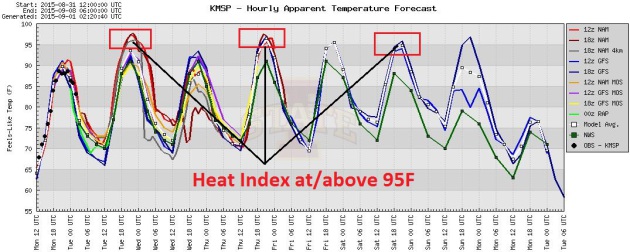
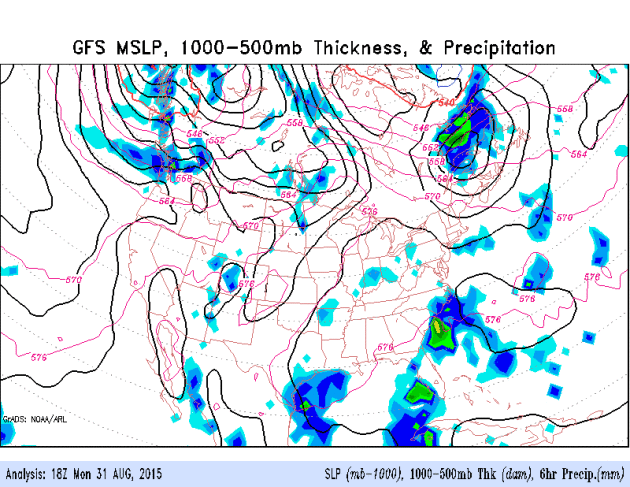


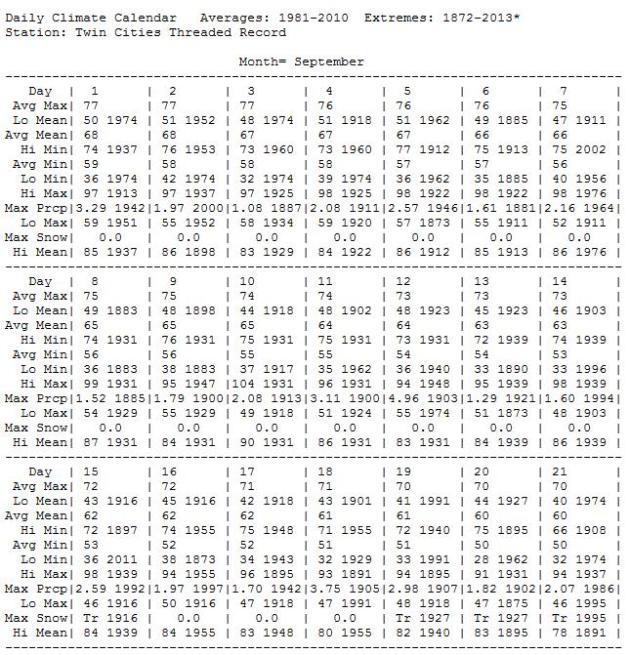


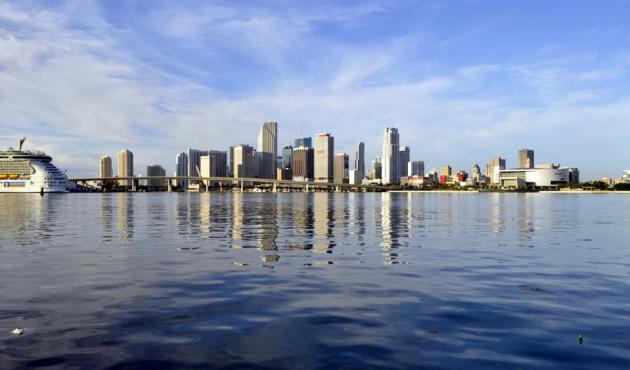
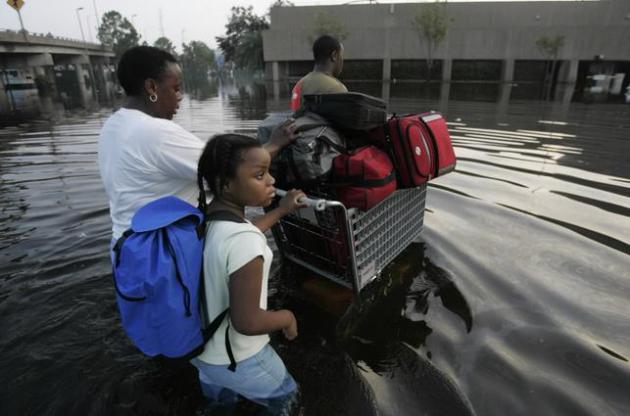

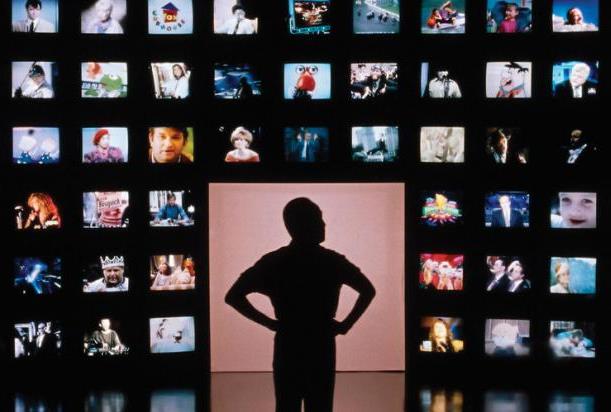


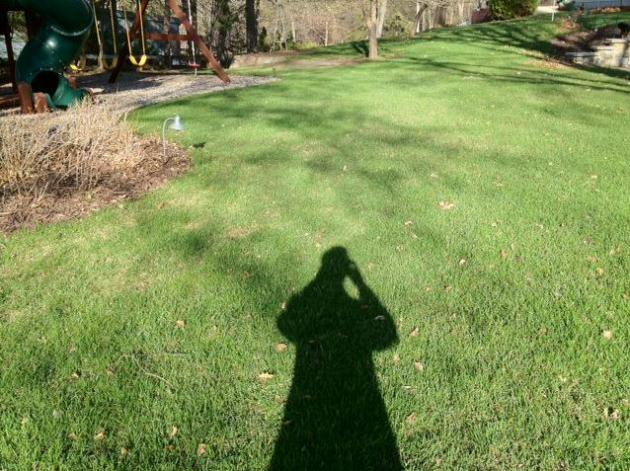

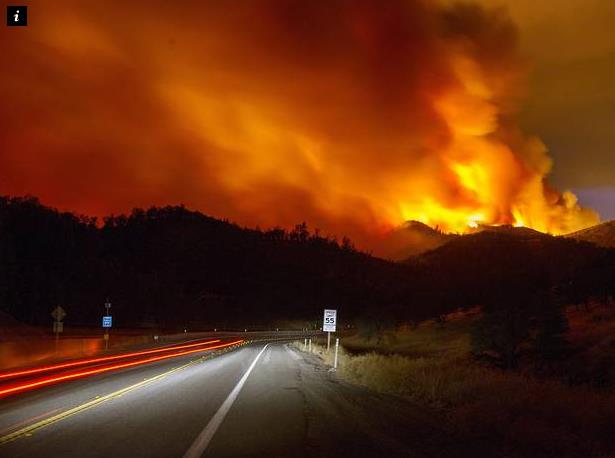
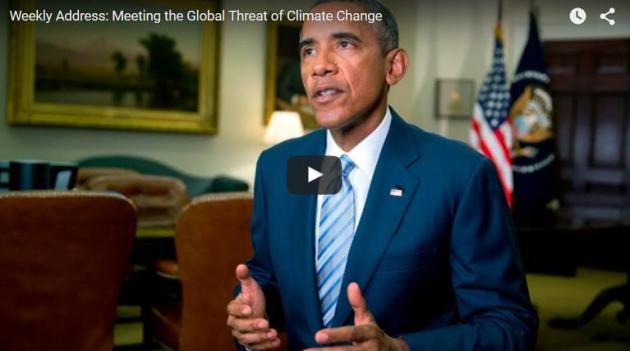




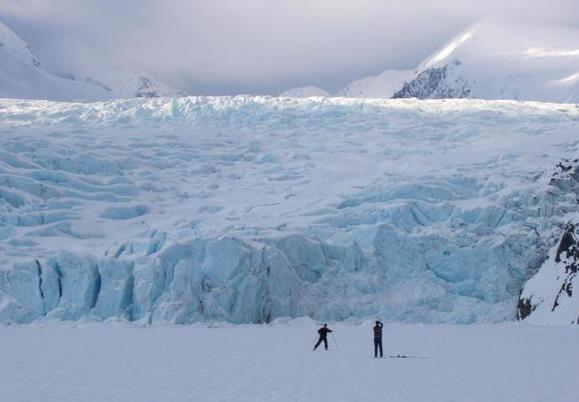


No comments:
Post a Comment